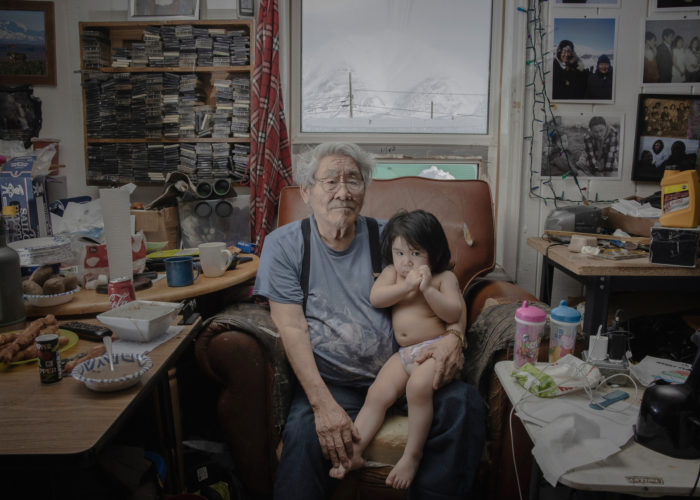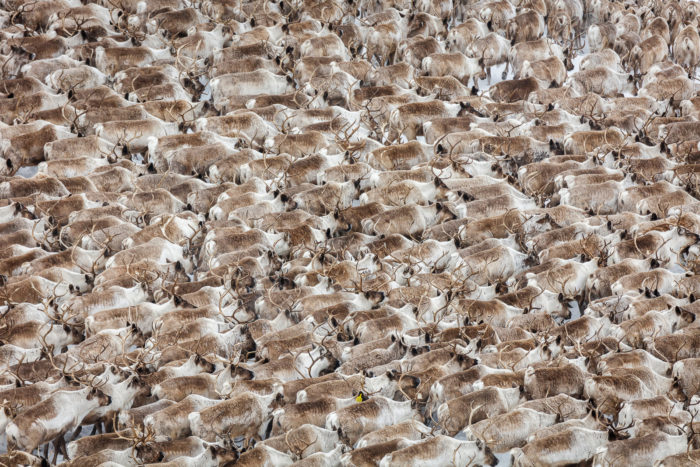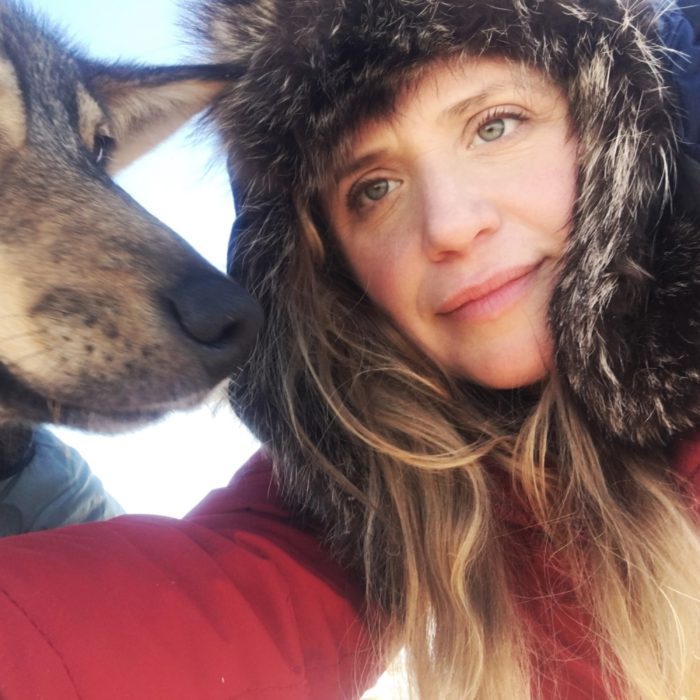
Vanishing Caribou is a powerful and intimate photographic project that tells the dramatic story of a key Arctic species’ disappearance and the resilience of the Indigenous communities who have lived in harmony with it for millennia. Drawn to absence, Katie explores how climate change often reveals itself through what is no longer there: melting glaciers, transforming lands, and vanishing animals. It is in the void left by what once was that the future of new, uncertain generations is shaped.
For over ten years, Katie has documented the Inupiat, Gwich’in, and Inuvialuit communities across Alaska and Canada, witnessing how the climate crisis is transforming the relationship between people, animals, and the land. Since 2020, her focus has been on the alarming decline of Arctic caribou populations, which have dropped from about 5 million to less than 2 million in just a few years — a collapse unprecedented for large land mammals, comparable only to the disappearance of the American bison.

Caribou are the beating heart of the Arctic ecosystem: every year they undertake the longest terrestrial migration on the planet, feeding a complex web of predators and contributing to soil and vegetation health. For Indigenous communities, caribou are much more than a resource: they are an integral part of culture, spirituality, and survival. Subsistence hunting is not just an economic activity, but a sacred bond intertwining life, death, and deep respect for nature.
Following the caribou’s path through wild and breathtaking landscapes, Katie faced extreme challenges and spent invaluable time in Arctic communities, listening to elders and hunters, learning their knowledge and witnessing their resilience. Her images invite reflection on the complexity of Earth’s ecosystems and the urgent need to protect biodiversity and Indigenous cultures, guardians of ancient and precious knowledge.

Vanishing Caribou is a story of loss but also of hope: many communities are leading conservation and food sovereignty efforts, representing models of sustainability and resilience. Through this work, Katie Orlinsky calls us to a collective commitment to protect the planet by valuing the voices and traditions of those who have always been living parts of it.
Location:
Info
Location: Museum of Natural History |
Piazzetta Silvio Gigli, 2 – Siena
Period: September 27th – November 30th
Opening Time:
Friday: 03:00 pm-07:00 pm
Saturday-Sunday: 10:00 am-07:00 pm
Holidays: 10:00 am-07:00 pm
TICKET VALID FOR VISITING ALL THE EXHIBITIONS

Photographer Biography: Katie Orlinsky’s work focuses on the human stories of our changing planet, exploring how the climate crisis is challenging communities across the Arctic and transforming the relationship between people, animals and the land. Katie is a regular contributor to National Geographic. Her work is also frequently published in The New York Times, The New Yorker, The Wall Street Journal and Smithsonian Magazine, among others. She has been awarded by World Press Photo, Pictures of the Year International, The Alexia Foundation, Visa Pour L’image, PDN and the Art Director’s Club. Katie received a BA in Political Science from Colorado College and an MS in Journalism from Columbia University. She has taught photojournalism as a visiting professor at NYU and the University of Alaska Fairbanks.


